We have come to the last day of our China tour and we had to catch the flight home to Singapore at 4.30pm. We still have time to visit one last attraction in the morning, which will be the Summer Palace (颐和园). We first checked out of the hotel and stored our luggage at the reception. We then travel via the MRT from Andingmen Station (安定门) to Beigongmen Station (北宫门). The whole area is very large and the route we have planned is to enter the attraction from the Northern Palace Gate then exit from the Eastern Palace Gate.
Summer Palace (颐和园)
The Summer Palace (颐和园) serves as an imperial garden during the ancient Chinese dynasties, first built by the Jin dynasty, then later further expanded during Yuan, Ming and more notably the Qing dynasty. It centred around the Longevity Hill (万寿山) and Kunming Lake (昆明湖). Many popular buildings and landscapes are located on the slope of the front hill, the rear hill and around the Kunming Lake (昆明湖). The current name Yiheyuan (颐和园) was given by the Qing Emperor Guangxu (光绪皇帝). The Summer Palace (颐和园) should not be confused with the Old Summer Palace (圆明园), which is located nearby east to it. The Summer Palace (颐和园) suffered similar fate as the Old Summer Palace (圆明园) during the Second Opium War, where large parts of the palace were destroyed by the British and French Allied forces. Efforts and resources had been spent on the repair and restoration of the Summer Palace (颐和园), thus visitors won't be able to see any ruins today.
Once we alighted at Beigongmen Station (北宫门), it was still some walking distance to the ticket office at the Northern Palace Gate. We purchased the through ticket to allow access to all the attractions. At the entrance, there were many independent tour guides that offered tour guide services, thus visitors could engage one of them to tour the palace.
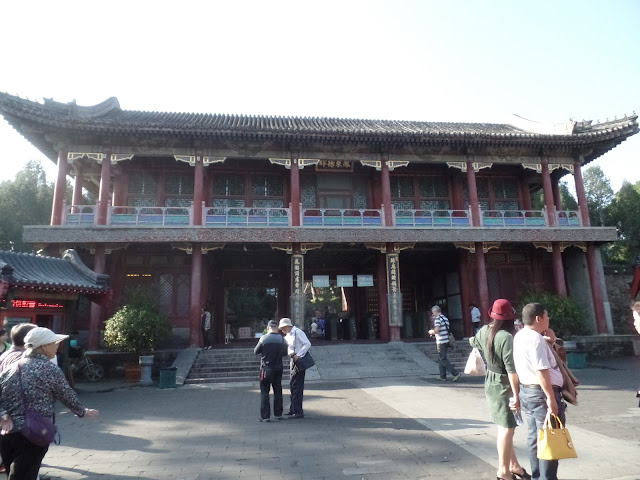 |
| Summer Palace Northern Palace Gate |
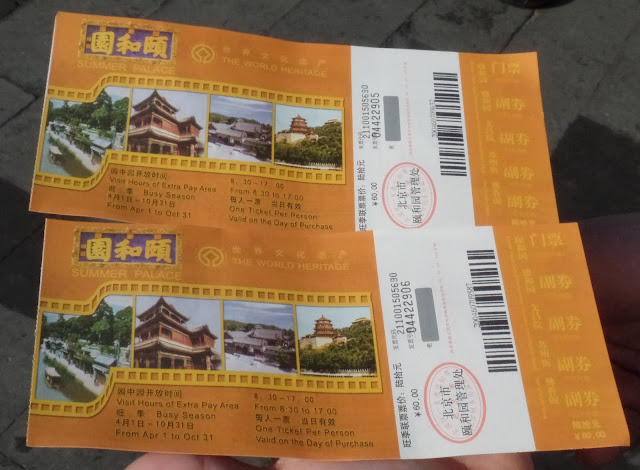 |
| Summer Palace entrance tickets |
Shortly after the entrance, we reached the Suzhou Street (苏州街). The Suzhou Street (苏州街) was built by Qing Emperor Qianlong (乾隆皇帝) to resemble the Jiangnan waterway shopping street. Over here, there are retails shops, restaurants and tea houses by the side of the waterway. It was an unique experience walking the along narrow pathway around the shops. Visitors could also take the boat ride here to the Kunming Lake (昆明湖).
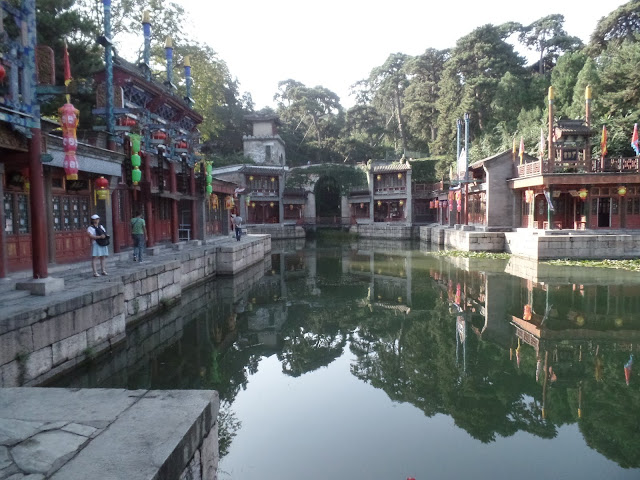 |
| View at Suzhou Street |
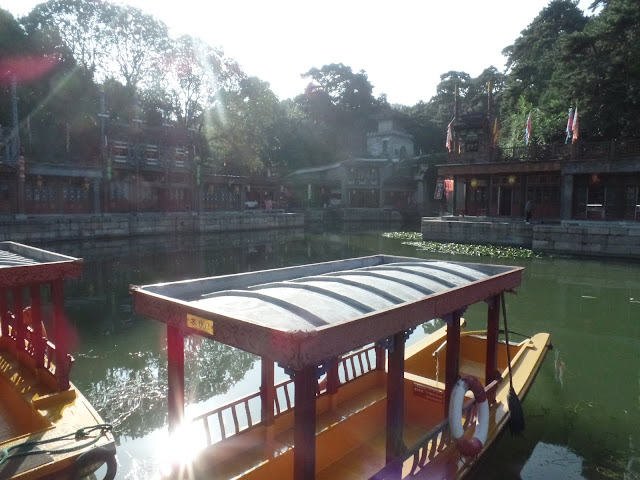 |
| Boat ride to the Kunming Lake |
 |
| Panoramic view of Suzhou Street |
After the Suzhou Street (苏州街), we continued south towards a square. From here, we started to climb uphill, the rear hill of Longevity Hill (万寿山).
 |
| Way up to the Four Great Regions |
We climbed down the steep staircase down towards the Hall of Moral Glory (德輝殿), which is the place where the emperor and empress rest and change clothing before they pray to the Buddha.
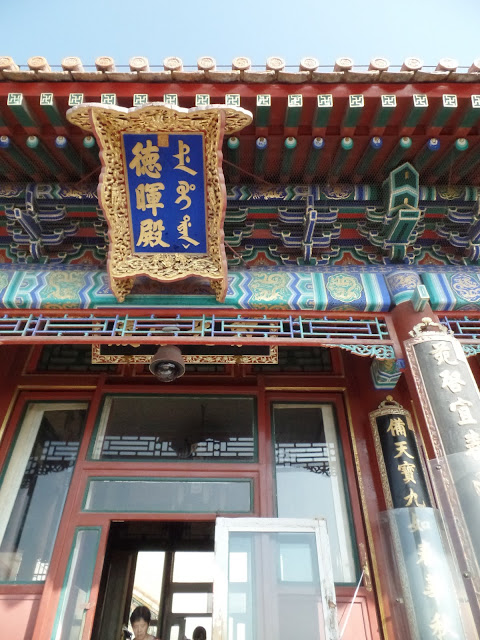 |
| Hall of Moral Glory |
Further down is the Hall of Dispelling Clouds (排云殿), which was the place where Qing Empress Dowager Ci'xi (慈禧太后) received guests and held ceremonies to celebrate her birthday. There are many treasures on exhibit display, which were the gifts for the Empress Dowager's birthday. We exited the area and came to the courtyard area with stone arch bridge over rectangular pond. This is where visitors could get a good view of the Hall of Dispelling Clouds (排云殿) against the backdrop of the Tower of Buddhist Incense (佛香阁).
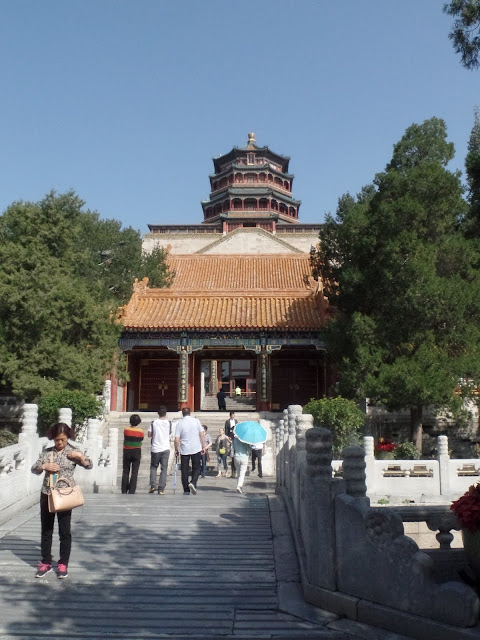 |
| Entrance of Hall of Dispelling Clouds |
Passing through the Gate of Dispelling Clouds (排云门), we could see the Glowing Clouds and Holy Land Archway (云辉玉宇牌坊) just in front the bank of Kunming Lake (昆明湖).
Over here, we realised the area is much more crowded with tourists than uphill the Longevity Hill (万寿山). We rested a while and continued eastward along the Long Corridor (长廊) towards the East Courtyard area. The Long Corridor (长廊) contains many decorations and paintings of famous Chinese places, mythology and novels. It's worth to stroll along here to enjoy them. At the East Courtyard, there are several halls that used to serve as the residence and administrative buildings for the emperor and the empress dowager. The first one we passed by was the Hall of Happiness and Longevity (乐寿堂). This was the living quarter of Qing Empress Dowager Ci'xi (慈禧太后) when she visited the Summer Palace (颐和园). Just in front of the hall, there's a big strange stone that is believed to be auspicious.
 |
| Hall of Happiness and Longevity |
Another 3 popular buildings closer to the Eastern Palace Gate are the Hall of Jade Ripples (玉澜堂), Hall of Benevolence and Longevity (仁寿殿), and the Garden of Virtue and Harmony (德和园). The Hall of Jade Ripples (玉澜堂) was the place where Qing Emperor Guangxu (光绪皇帝) was put on house arrest by Empress Dowager Ci'xi (慈禧太后), after his failed Hundred Days Reform. The Garden of Virtue and Harmony (德和园) consist of the 3 storey high Grand Theatre (大戏楼), where the emperor and empress dowager watched Peking opera. The Hall of Benevolence and Longevity (仁寿殿) was the place where the emperor and empress dowager managed the court affairs. Further east of this area, there's an exhibition hall known as the Gallery of Literary Prosperity (文昌院), where many of the imperial treasures from the Summer Palace (颐和园) are on display.
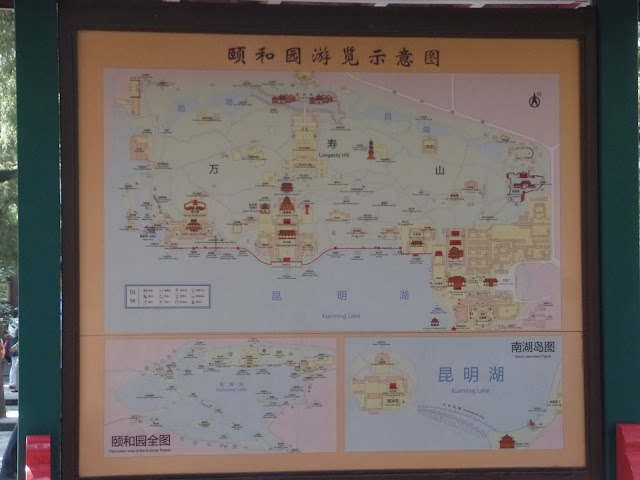 |
| Map of Summer Palace near the Eastern Palace Gate |
There's much more area around the Kunming Lake (昆明湖) that we had not explore due to time constraints. We left the Summer Palace (颐和园) via the Eastern Palace Gate at around noon time and walked towards the Xiyuan Station (西苑). Just before reaching the MRT station, we had our lunch at the MacDonald's nearby.
Goodbye Beijing
After lunch, we took the MRT back to
Imperial Courtyard Hotel (北京花园十六号酒店) to collect our luggage from the reception. We followed the reverse way to how came from the airport on
Day 1, by taking the Airport Express Railway from Dongzhimen Station (东直门) to Beijing Capital International Airport Terminal 3 Station. Once we reached the station, we returned the Yikatong (一卡通) to refund the remaining amount in the card. From here, it's time to bid farewell to Beijing. In concluding the entire trip, my wife and I were pleased that we had completed most of the activities according to the plan and within budget. It had been a very enriching cultural and historical learning for us, and we look forward to future free and easy trips to China again.
Follow the links below to the other days of my China tour:
Day 1: Beijing (Yonghe Lama Temple, Shizhahai, Prince Gong Mansion, Behai Park, Gui Jie)
Day 2: Beijing (Tiananmen Square, Forbidden City, Old Summer Palace, Wangfujing)
Day 3: Tianjin (Italian Style Town, Nanshi Food Street, Drum Tower, Ancient Cultural Street, Quanjude Peking Roast Duck)
Day 4: Xi'an (Muslim Street, Drum Tower, Bell Tower, Xi'an City Wall, Defu Alley)
Day 5: Xi'an (Terracotta Army Museum, Da Ci'en Temple, Big Wild Goose Pagoda, Tang Paradise)
Day 6: Huashan
Day 7: Beijing (Temple of Heaven, Silk Street)
Day 8: Beijing (Great Wall - Badaling, Ming 13 Tombs - Ding Ling, Shizhahai)
Day 9: Beijing (Summer Palace)






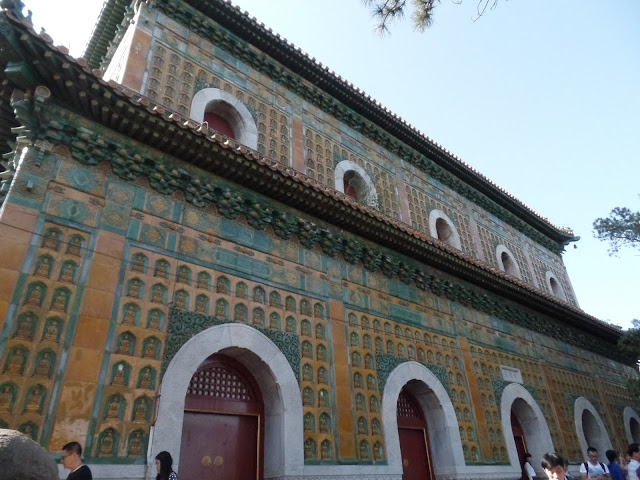



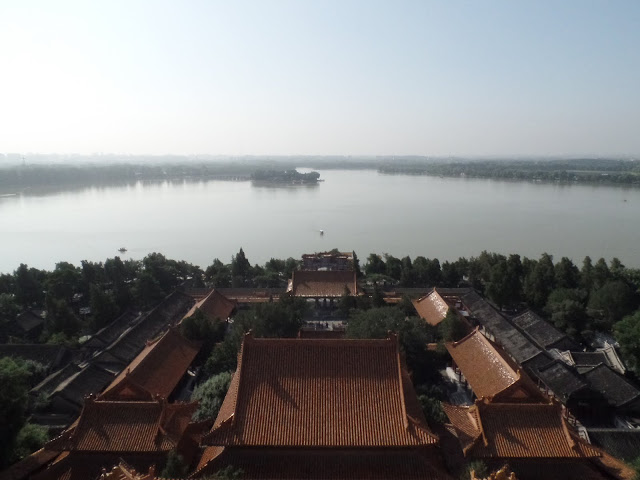

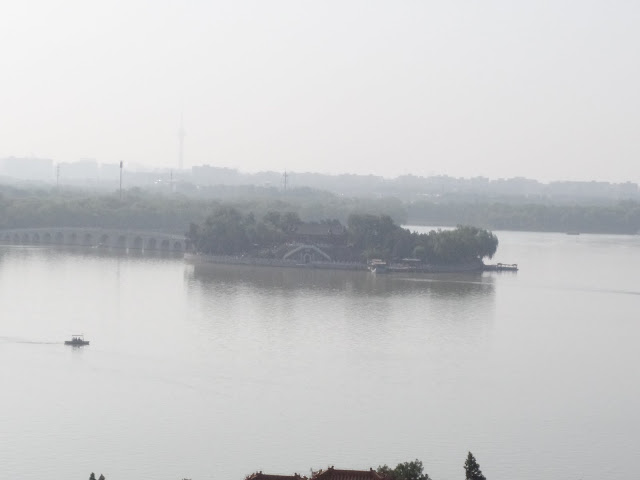





No comments:
Post a Comment